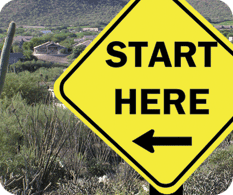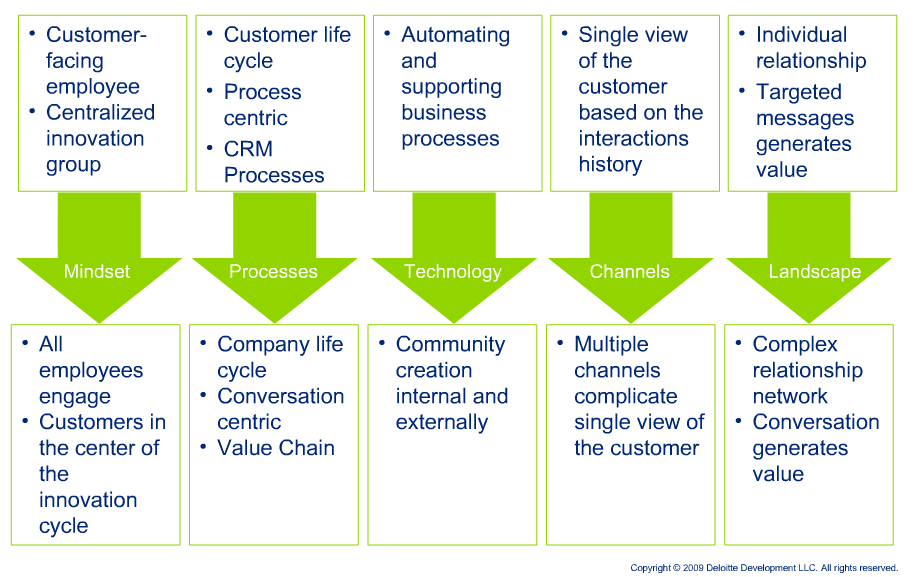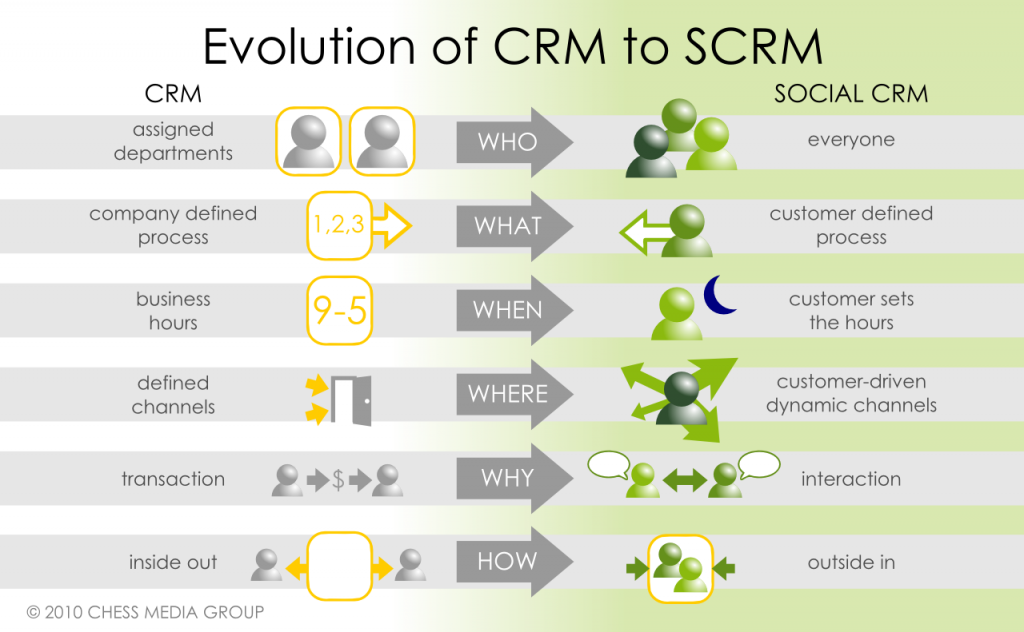UPDATED July 8, 2010
Chess Media Group in collaboration with Mitch Lieberman just recently released The Guide to Understanding Social CRM, a free whitepaper created to help brands and organizations navigate and understand Social CRM.
 I’m going to be speaking at the New Communications Forum (see sidebar link) in April on Social CRM. I’m currently collaborating with Esteban Kolsky on a what I hope will be a killer presentation. I reached out to Esteban because I greatly admire and respect his research and his work; I consider him to be one of the top leaders in the space. I’ll talk more about some of the things we’re going to be putting together as we get closer to the event. For now, I wanted to provide a high level introduction to social CRM for those that are not familiar with the topic.
I’m going to be speaking at the New Communications Forum (see sidebar link) in April on Social CRM. I’m currently collaborating with Esteban Kolsky on a what I hope will be a killer presentation. I reached out to Esteban because I greatly admire and respect his research and his work; I consider him to be one of the top leaders in the space. I’ll talk more about some of the things we’re going to be putting together as we get closer to the event. For now, I wanted to provide a high level introduction to social CRM for those that are not familiar with the topic.
In order to understand what Social CRM is we first have to understand traditional CRM. At the very basic level CRM is essentially a contact list with information about who you know, how you know them, and how you have interacted with them. You categorize people in your CRM tool as leads, friends, prospects, or anything else that helps you define who that person is and how you know them. What we are dealing with here is a collection of data about people that you “know”; you then use that data to help manage your relationships (which in most cases is with your customers). CRM has been around for over 20 years and has been used by both small and large companies to keep track of their customers. CRM systems are designed to create a process around the interaction that your company has with its customers in hopes of more efficiently closing a sale or resolving some sort of an issue. Examples of popular CRM systems include Salesforce, Zoho, Sugar CRM, and many others.
So what is Social CRM? Well, first let’s take a look at what has happened to get from CRM to Social CRM. The difference between these two is just one word, social. Social brings a new element into CRM because now instead of just dealing with data and information we are dealing with conversations and relationships with the social customer. These conversations and relationships take place not just from company to consumer but also from consumer to consumer. Think of twitter as a simple example. Let’s say you are a large brand on twitter such as Southwest Airlines. You are building relationships with your followers but you also have the ability to build relationships with and listen to (and engage) customers that are having conversations about you. Traditional CRM didn’t work with twitter or facebook or with any other social platform, it was just a collection of data and information. So again, the big different between CRM and Social CRM is that we now have all these conversations and relationships to consider.
Paul Greenberg, a leader in Social CRM defines it as such:
“CRM is a philosophy & a business strategy, supported by a technology platform, business rules, workflow, processes & social characteristics, designed to engage the customer in a collaborative conversation in order to provide mutually beneficial value in a trusted & transparent business environment. It’s the company’s response to the customer’s ownership of the conversation.”
Here’s a visual that I’m hoping will capture what this shift from CRM to Social CRM looks like, it was taken from a presentation by the folks at Deloitte.

UPDATE: Here is the visual that Chess Media Group created to help depict the change

Hopefully we now have a clear distinction (at least at a high level) between CRM and Social CRM.
Here are some things for you to think about as we will continue to explore this topic in the future.
- How can an organization take action based on the conversations and relationships that it fosters or engages in?
- How do you structure your organization in a way that is both efficient and scalable to take advantage of Social CRM?
- How can you take all of the unstructured data from the social web and structure it in a way that allows you to get actionable insight?
- How can you use Social CRM to empower your customers and grow your customer base?
Esteban has some very interesting ideas and frameworks for Social CRM and I’m hoping that we will be sharing it with all of you soon. Any questions thus far?

This is an interesting case, however, I think you haven't highlighted one of the most important aspects of CRM in general – workflow. While there is a great deal of contact management involved in the C of CRM, there's a lot of automatic and information flow that is critical to its success.
Most, if not all, CRM systems provide facilities for scoping customer needs, defining customer interactions, and delegating responsibility to the parties whom are responsible for the various customer touch points.
As you noted, social adds a new dimension, but it doesn't add conversations and relationships – it merely expands the available data sources. Every CRM application today already tracks the basics of a relationship (inception, sentiment, status) and conversations (emails, deliverables, etc).
I think a key aspect of Social CRM is that this engagement model is now applied to indirect interactions as opposed to direct ones. Previously, CRM on-ramped from email, web forms, and physical presence. Today, we see “customers” increasingly as those who have an opinion on our company, product or person – opinion enough to state it out loud, that is. The interesting intersection here, of course, is that as it pertains to our public identities and reputations, we see the branding, PR, and marketing delegations equally interested in the depth and nature of these “customers” and the “relationships” we build with them.
In my mind, it leaves me wondering… is Social CRM merely the act of keeping the boulder precariously balanced on the top of the mountain? Are we trying to leverage our effort to get “up” while keeping everything from slipping “down”?
I briefly touched on workflow (or process):
“CRM systems are designed to create a process around the interaction that your company has with its customers in hopes of more efficiently closing a sale or resolving some sort of an issue”
I should have highlighted it a bit more though, you're right. In upcoming posts there will definitely be a lot more on work flow and process, especially around Social CRM. You make a good point, CRM systems to look at relationships and conversations but they don't look at anything in real time and don't tap into social platforms where information is being shared between consumers. CRM systems are not very nimble programs and as you said they look at the basics of relationships and conversations. This will definitely be talked about more in upcoming posts. Part of what I'm going to be working on for the New Comm presentation is being able to answer some of the questions that you addressed in your comment. It's tough for an enterprise company to build a scalable and efficient social CRM practice; something that gets all the right information to all the right people. Thanks for the awesome comment and for clarifying a few things on my end 🙂
Good introduction on SCRM.
I think the most important difference is that CRM is about processes, segmentation and workflows while SCRM is about the customer. The customer is in control and decides the flow of information.
Companies can participate if the customers let them.
The main question should be about the customer: how can we use SCRM to get our customers more satisfied. And, will customers let companies get involved? (and how far?)
SCRM will force companies to be open and to share more information than they are used to. It also raises issues about what employees share on behalf of a company and what they share as private persons.
I would say these issues and questions should be part of your presentation.
Ludo Raedts
Jacob,
Thanks for the quick response.
I definitely noted that you touched on the workflow aspect, I guess I wanted to raise the profile of that. A large reason that the workflow is so critical in the enterprise is to delegate and automate as many decisions as possible – informational requests can often be best serviced from a knowledge base or FAQ than requiring human intervention, for example.
In the social realm there is a huge amount of noise and I think this is one of the bigger problems for most brands/enterprises when they start to look into this set of interactions. Many a company is working to dampen that noise and surface the most critical issues.
Looking forward to future posts on this subject for sure.
Jacob, great article and as you know, you're in good hands with Esteban.
In the long run, Social CRM will likely just become part of CRM and no distinction will be necessary. In the meantime, though, there is value in the term and Paul did a great job of laying forth an acceptable definition.
Readers of this post might find value in the following as well:
Traditional CRM vs Social CRM expanded
http://freecrmstrategies.wordpress.com/2009/06/…
Thanks again for the helpful post.
– Brian
Yep, you're absolutely right. I was hoping that the visual would also help explain a few things but I should have been a bit more clear with that. In following posts I'll make sure that distinction is called out to avoid any confusion. Workflow is definitely crucial and it's a huge challenge for enterprise companies that are trying to figure out the best way to structure their teams. As you said there's a lot of noise, so that's why one of the questions I'm hoping to address at the end of the post is, how do you take all of the uninstructed data and make sense of it all? Great comments man, much appreciated!
Hi Ludo,
I'm going to highlight that distinction in upcoming posts. I want to get into a lot more detail with social CRM but am waiting after the new year so that everyone can read and participate in the conversation. I certainly don't have all the answers and I don't think anyone does, but it's a great topic to discuss and I certainly have my own ideas about things. You do ask the right question with getting the customer involved but that is much easier said that done. We're dealing with conversations and customers that exist all over the web so we need to find a way to structure our team internally to take advantage of that. Also, the data is scattered in multiple places and is unstructured, so how do we structure it to make sense of it? We will definitely be touching on some of the issues you mentioned as well.
Thanks for the comment!
Hey Brian,
Yep, I actually remember reading that article; it was great. It should be interesting to explore some of these ideas with Esteban as he has already developed a pretty solid framework around Social CRM. Hope you will be around for the continued discussion of social crm during the new year!
Pingback: Should Social CRM be Automated?
I like this blog and i well viset agen thank you
http://www.forexqs.blogspot.com
Pingback: Social CRM: Can Your Customers Find Your Brand Online?
To other non-marketing readers like me, CRM means Customer Response Management. Just saying. 🙂
To other non-marketing readers like me, CRM means Customer Relationship Management. Just saying. 🙂
Contesting the Death of Traditional CRM: Social CRM is a Process and
not a Technology.
http://creativestride.com/blog/2010/06/01/conte…
Pingback: What’s Coming Up Next for Social CRM and Enterprise 2.0?
I just attended this event.
WIN HP mini Netbooks (5 Netbooks) and 100 Dynamics CRM online subscription (free for 6 months).
The Dynamic Business Week is the event where you can experience the Social Customer Relationship Management (SCRM) community in action. This event offers you a unique opportunity to network with your peers, industry experts and Microsoft Dynamics CRM team members. Share ideas and knowledge— all in one place.
Visit Dynamic Business Week by following this link. http://bit.ly/dsBBc4 .
This event lets you interact with industry experts in the CRM and social CRM space and also with other attendees that are interested in SCRM .
This is a virtual event with social media interaction built from ground up, the Virtual events platform used is http://social27.com and it is based on Windows Azure platform.
http://www.microsoft.com/windowsazure/
At Oxford Economics we feel that social CRM technologies will result in huge changes to business processes. We'd very much welcome if visitors to this site might get involved in our embryonic Social CRM community. We are building a series of audio interviews, SCRM assets, discussions, blog posts etc. Perhaps we could share some content and cross refer.
http://socialcrmhub.com
It's interesting the point that Greenberg underlines about the evolution of CRM into Social CRM: “Social CRM is an extension of traditional CRM, not a replacement”
Thank you for your great helpful post about SCRM introduction.
It’s amazing, looking at the time and effort you put into your blog and detailed information you provide. I’ll bookmark your blog and visit it weekly for your new posts.
Thanks for the informative and clear post…
Well put, written and organized. With the volume of conversations and their flow, the issue will be identifying which conversations are deemed to have business value? And, even more importantly who are the “They’s” that make that important distinction?
I always enjoy and appreciate these perspectives. This was very well done. Having said that, I always finding myself wondering about which prism we look through in any market opportunity observation. As the Co-Founder & Inventor/Designer of ACT! that created this whole relationship-management legacy as the first Contact Manager, and now as the CEO & Founder of VIPorbit (www.viporbit.com) I take the view from the other side of the playing field. In other words, who doesn’t, or couldn’t ever perhaps, this apply to, and what about them? We all have blinders on, let’s face it. Fact – there are less than 20 million global users today of CRM and Contact Management products – and don’t even try to add Business Outlook to that because despite claims to the contrary it isn’t CRM or CM. sCRM will add an interesting dimension to CRM/CM, but with what market potential?
In all honesty, let’s ask ourselves regarding those who are “relationship-centric” how many of them really really and literally “live in the cloud”, as well as those and others who really really want to monitor all of and each and every day the chatter of people? Although it may be in the millions, which granted on the surface is no small number, it nonetheless significantly pales in comparison to the 1.4 billion smartphone users and 100 million tablet users that analysts expect will exist by the end of this year 2011.
sCRM is an improvement to CRM/CM, but it is also a piggyback. Certainly not even close to being “disruptive” to the mass market of device-enabled relationship-centric users.